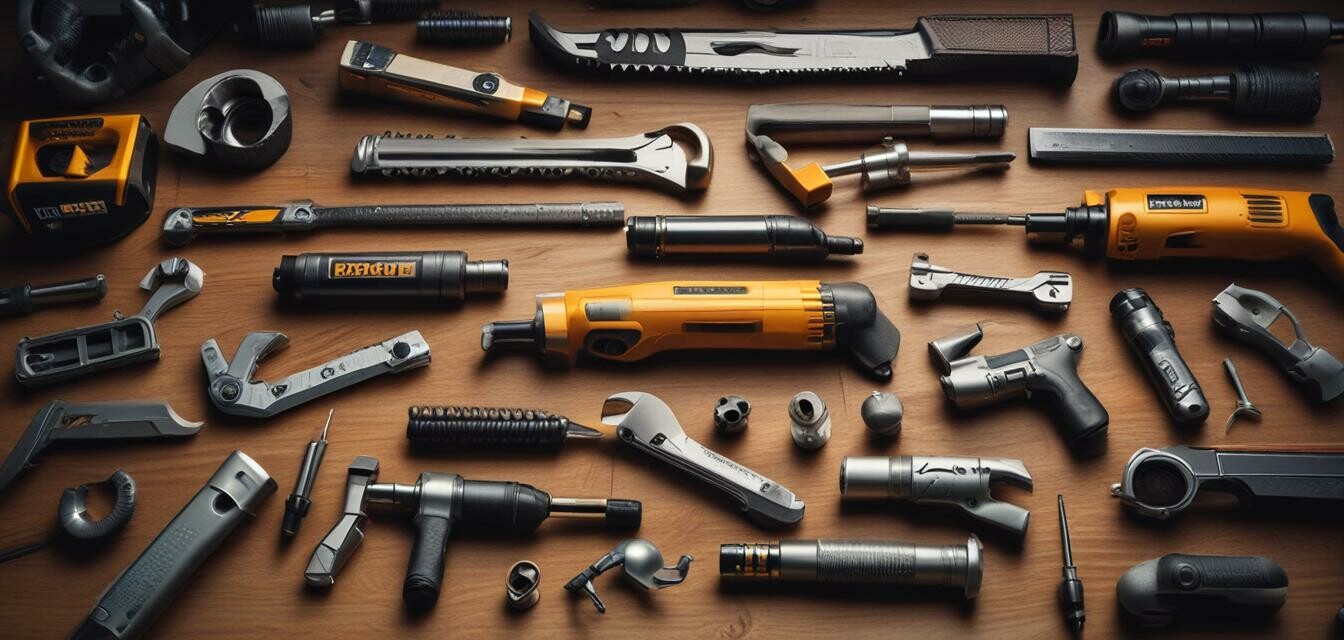
The Evolution of Power Tools Over the Last Decade
Key Takeaways
- The last decade has seen significant advancements in power tool technology.
- Battery technology has improved, making cordless tools more powerful and efficient.
- Safety features have been enhanced, prioritizing user protection.
- Connectivity features, such as Bluetooth, have become more common.
- New materials and designs have rendered tools lighter and more durable.
In the ever-evolving world of construction and DIY projects, power tools are indispensable. Over the last decade, these tools have witnessed transformative changes that empower contractors and DIY enthusiasts alike. This article provides a retrospective look at the advancements in power tools, focusing on the key innovations that have defined the industry.
1. Advancements in battery technology
One of the standout changes in the power tool industry over the past decade is the leap in battery technology. Modern tools now boast:
- Lithium-ion batteries: These batteries provide consistent power and have a longer lifespan than their predecessors.
- Fast charging: Users can now recharge their tools quickly, reducing downtime during important projects.
- Smart battery management: Many tools feature systems that prolong battery life by optimizing usage.
2. Shift towards cordless convenience
The shift from corded to cordless tools has been rapid, with more professionals now favoring the flexibility that cordless options bring. Here are some benefits:
- Portability: Cordless tools are easier to handle and can be used in various locations without worrying about power sources.
- Lightweight options: Manufacturers have minimized weight without sacrificing power, making usage more comfortable.
- Versatile applications: The variety of cordless tools available allows for a broader range of tasks without the clutter of cords.
3. Enhanced safety features
Safety has always been a priority in using power tools. Recent developments include:
- Smart sensors: Tools now come equipped with sensors that can detect unsafe conditions and shut down automatically to prevent accidents.
- Protective guards: Improved designs ensure that users are protected while operating the tools.
- Ergonomic designs: New designs prioritize user comfort, reducing the risk of fatigue and injuries.
4. Greater connectivity and smart features
Bluetooth technology has led to the rise of smart power tools. These tools now often feature:
- App integration: Users can connect tools to mobile applications for tracking performance and usage statistics.
- Remote diagnostics: Some brands offer troubleshooting assistance, ensuring that any issues can be quickly addressed.
- Customization options: Users can adjust settings and configurations wirelessly to tailor their tool's performance.
5. Innovations in material and design
Today's tools are not only smarter but also more durable. Innovations include:
- High-strength composites: New materials offer improved durability without adding excessive weight.
- Streamlined designs: Modern tools feature a more user-friendly design, which improves handling and ease of use.
- Environmental considerations: Manufacturers are increasingly focusing on eco-friendly materials and production techniques.
6. The impact on contractors and DIY enthusiasts
The advancements in power tools are not just about features; they represent a profound change in how work is done. For contractors and DIY enthusiasts, these developments mean:
- Increased efficiency in completing projects.
- Greater accessibility to high-quality tools.
- An overall enhancement in work safety and user experience.
Conclusion
The evolution of power tools over the last decade has undoubtedly transformed the landscape for contractors and DIY workers. With innovations in battery technology, safety features, and connectivity, the tools of today offer unprecedented convenience, safety, and usability. Keeping abreast of these trends is crucial for anyone invested in the industry, as it directly impacts the quality of work and project outcomes.
Further Reading
If you're interested in learning more about the latest trends in portable power tools, check out our related articles:
